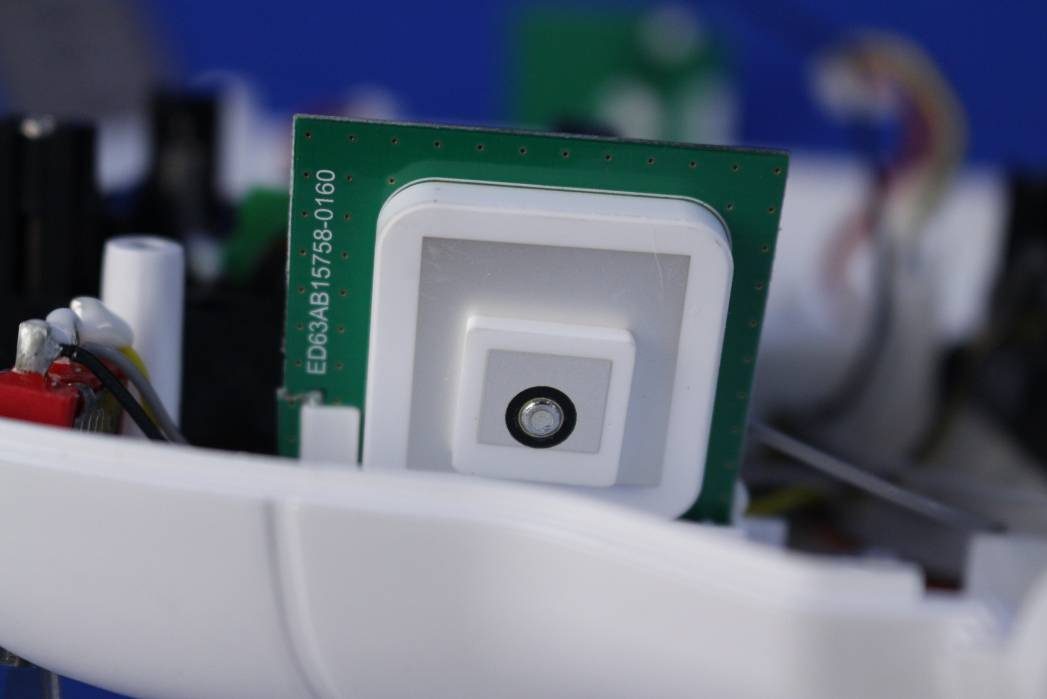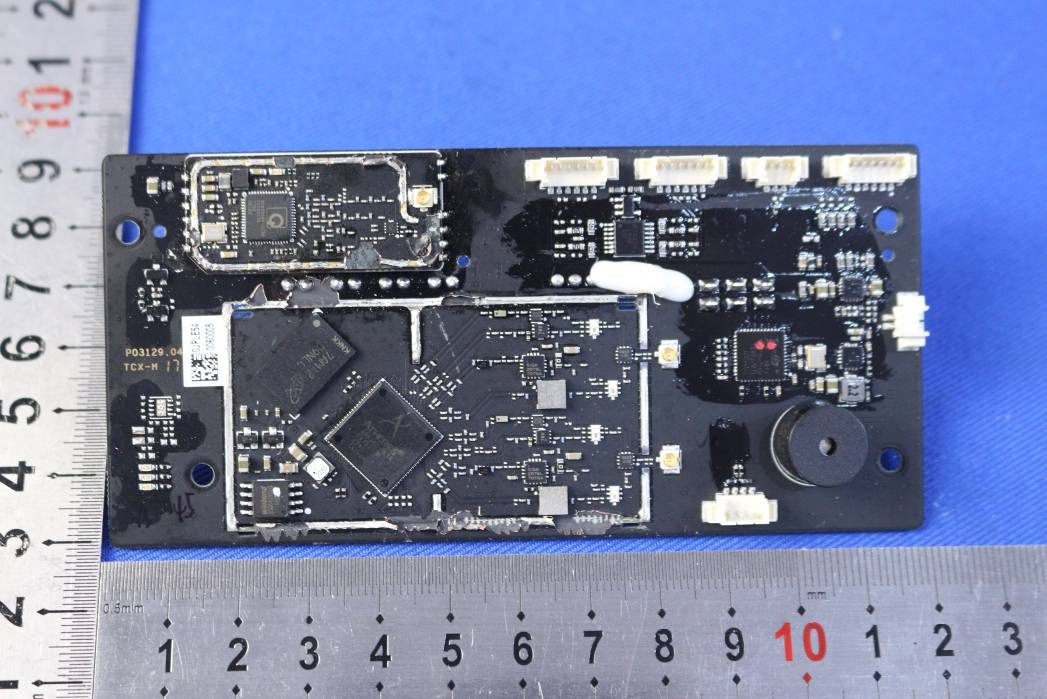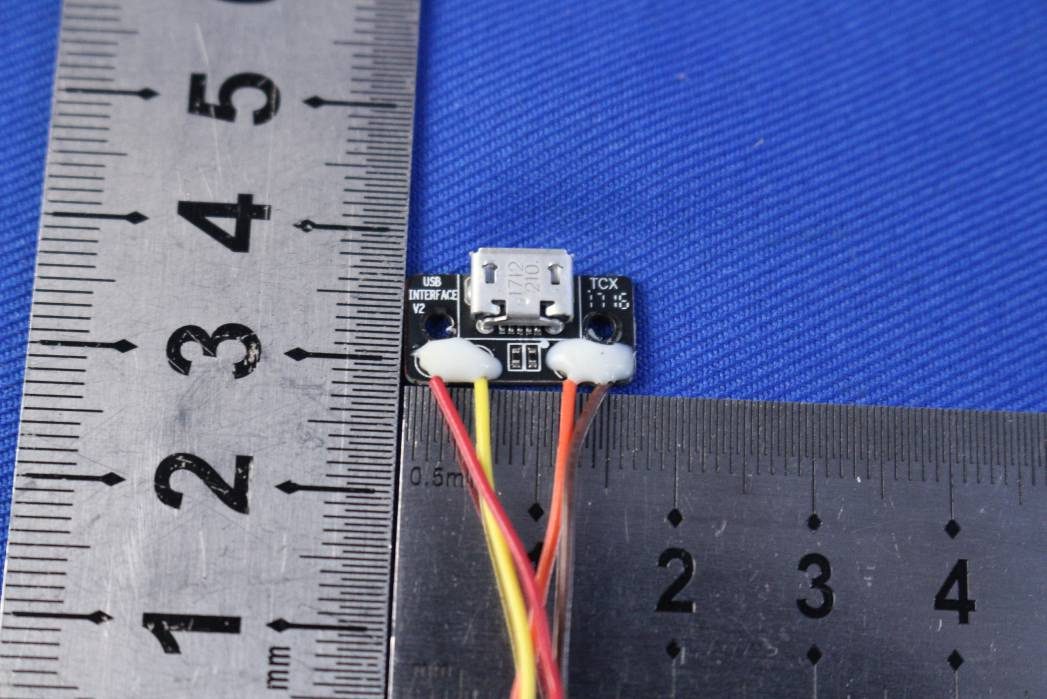Introduction
The Phantom 3 SE by SZ DJI TECHNOLOGY CO., LTD. stands as a formidable entrant in the consumer drone market, blending advanced imaging, robust wireless communication, and intelligent flight control into a compact aerial platform. As a member of DJI’s renowned Phantom series, the Phantom 3 SE is designed for users seeking high-quality aerial photography and videography, offering a seamless piloting experience with professional-grade results.
A key milestone in the Phantom 3 SE’s journey to market is its FCC certification under FCC ID SS3-GL358WD1705. This certification is crucial: it indicates the drone’s compliance with rigorous U.S. regulations governing radio frequency (RF) emissions and electromagnetic interference (EMI), ensuring safe, legal operation and sale within the United States. While the grant date is listed as none, the device’s listing on FCC.gov signals that it meets all necessary technical and regulatory standards.
In this article, we will dissect the Phantom 3 SE’s most critical aspects: its standout features, technical specifications, operating frequencies, wireless technologies, and a detailed teardown of its internal components. We’ll also provide regulatory insights and explore practical use cases, offering a comprehensive perspective for engineers, tech enthusiasts, and drone aficionados interested in the intersection of innovation and compliance.
Key Features & Specifications
The Phantom 3 SE is engineered for both enthusiasts and professionals, packing an impressive array of features that deliver exceptional performance, reliability, and creative capability.
Key Features
- Remote Controller Transmission Distance
- FCC: Up to 13,123 feet (4,000 m)
- SRRC: Up to 9,843 feet (3,000 m)
- Benefit: Enables long-range piloting and real-time video transmission, ideal for expansive aerial shoots.
- Gimbal
- Pitch Controllable Range: -90° to +30°
- Benefit: Provides smooth, stable footage with fine control over camera angles, essential for cinematic results.
- Camera
- Video: Up to 4K resolution
- Photo: 12 megapixels
- Benefit: Captures ultra-high-definition video and detailed stills for professional-grade content creation.
- Live HD View
- Wi-Fi Video Link: Delivers real-time, high-definition video feed to the operator’s mobile device.
- Mobile Device Holder
- Compatible with tablets and smartphones for flexible monitoring and control.
- Expandable Storage
- Micro SD support: Up to 64GB (Class 10 or UHS-1 required)
- Benefit: Ample space for extended recording sessions.
- Intelligent Flight Battery
- Provides up to 25 minutes of flight time per charge.
- GNSS Support
- GPS + GLONASS: Enables precise positioning and stable hovering.
Technical Specifications
- Max Ascent Speed: 5 m/s
- Max Bitrate of Video Storage: 60 Mbps
- Operating Temperature Range (Aircraft): 32° to 104° F (0° to 40° C)
- Supported SD Card Types: Micro SD, up to 64GB (Class 10/UHS-1)
- GNSS: GPS + GLONASS dual-satellite system
- Remote Controller Battery: 2,600 mAh LiPo 18650
- Max Service Ceiling Above Sea Level: 19,685 feet (6,000 m) (Software altitude limit: 400 feet above takeoff)
- ISO Range: 100–3200 (video), 100–1600 (photo)
- Camera Sensor: 1/2.3” CMOS, effective pixels: 12 MP
- Video Recording Modes:
- C4K 4096×2160 24/25p
- 4K 3840×2160 24/25/30p
- 2.7K 2704×1520 24/25/30p
- FHD 1920×1080 24/25/30/48/50/60p
- HD 1280×720 24/25/30/48/50/60p
- Battery (Aircraft):
- Energy: 68 Wh
- Capacity: 4,480 mAh
- Net Weight: 365 g
- Max Flight Time: ~25 minutes
- Voltage: 15.2 V
- Type: LiPo 4S
- Wireless Connectivity:
- Wi-Fi: Present (details not specified)
- Bluetooth: Present (details not specified)
Practical Implications:
These features make the Phantom 3 SE a versatile tool for aerial photography, mapping, inspection, and creative projects. Its robust wireless range, professional imaging capability, and intelligent flight systems are tailored for users who demand reliability and high performance.
Operating Frequencies
The Phantom 3 SE operates across several frequency bands, as detailed in its FCC filing under FCC ID SS3-GL358WD1705:
| Frequency Range (GHz) | Output Power (mW) | FCC Rule Part |
|---|---|---|
| 12.412–2.462 | 588.8 | 15CCC |
| 12.412–2.462 | 7.2 | 15CCC |
| 15.745–5.825 | 12.1 | 15E38 |
| 25.745–5.825 | 331.1 | 15E38 |
Interpretation:
These bands cover the standard 2.4 GHz and 5.8 GHz ISM ranges, commonly used for Wi-Fi, remote control, and telemetry in drones. The output power levels are optimized for long-range operation while remaining within regulatory limits for unlicensed spectrum, ensuring robust, interference-resistant communication and real-time HD video transmission.
Technology Deep Dive
The Phantom 3 SE leverages a combination of Wi-Fi and Bluetooth technologies—standard in modern drone communication stacks. The primary control and video downlink likely rely on the 2.4 GHz band for optimal range and penetration, while additional functions (such as pairing or device maintenance) may utilize Bluetooth.
The diverse operating frequencies allow the drone to balance long-range command-and-control with real-time video streaming and telemetry, even in RF-congested environments. The higher output power in the 2.4 GHz band enables the impressive 4,000 m (13,123 ft) transmission distance, while compliance with FCC Rule Parts 15CCC and 15E38 ensures minimal interference with other spectrum users.
From a performance perspective, these wireless systems offer:
– Extended Range: High transmit power and diversity antennas maximize operational distance.
– Low Latency: Essential for real-time video and responsive controls.
– Interference Mitigation: Multiple frequency bands and robust RF design reduce susceptibility to Wi-Fi congestion or external interference.
– Efficient Power Consumption: Power management ICs and efficient modulation schemes help maximize battery life during extended flights.
Test report summaries (where available) confirm that the Phantom 3 SE’s wireless subsystems meet all required emission and immunity standards, supporting reliable operation in demanding real-world scenarios.
In-Depth Internal Component Analysis / Teardown
Phantom 3 SE Remote Controller: Main PCB, Antennas, and Shielding
A detailed inspection reveals a meticulously engineered remote controller interior. The main PCB, finished in black FR4, showcases multiple shielded zones—hallmarks of high-frequency RF transceivers and a central microcontroller. The presence of two PCB trace antennas, likely inverted-F types, and an external white antenna, points to a diversity antenna system optimized for the 2.4 GHz band. Robust mechanical joystick assemblies with potentiometers or Hall sensors ensure precise control. Modular JST-style connectors facilitate assembly and servicing, while the use of large capacitors and inductors signals efficient, multi-domain power regulation. The dual-shielded RF sections, dense via stitching, and clear separation between analog/RF and digital domains underscore DJI’s focus on EMI suppression and signal integrity. Test points and tactile switches round out a design that expertly balances performance, reliability, and serviceability.

GPS Module: Ceramic Patch Antenna and Ground Plane
This subsystem is dedicated to precise drone navigation. The green FR4 PCB supports a large ceramic patch antenna, a standard for GPS L1 reception. The central feed pin and extensive ground plane maximize gain and directional sensitivity, critical for stable positioning. Neatly bundled wiring connects the antenna to the main flight controller, while the board’s modular design allows for easy servicing or upgrades. The absence of visible shielding is typical, as the GPS RF front-end and oscillator are often on the reverse side or shielded elsewhere. The overall assembly is robust, with secure mounting and minimal exposure to vibration, reflecting DJI’s commitment to reliable satellite acquisition and navigation.

Drone Navigation Subsystem: Dual Patch Antennas and Signal Routing
Within the drone’s fuselage, a pair of ceramic patch antennas is mounted on green PCBs, each carefully secured with central screws for stability and grounding. Coaxial cabling ensures low-loss RF transmission to the main board, while additional colored wires likely support integrated compass modules. The parallel presence of two antennas suggests either GPS+GLONASS capability or a diversity setup for enhanced reliability. The clean cable routing and sturdy mechanical fixation minimize noise and vibration—vital for precise navigation during dynamic flight. This subsystem exemplifies the industry-standard approach to UAV satellite positioning, balancing cost, performance, and durability.

Central Communications PCB: RF Shielding, FPGA, and Modular Connectors
A densely populated black PCB serves as the heart of the Phantom 3 SE’s communication and processing. The presence of a Xilinx FPGA indicates real-time, parallel signal processing—potentially for sensor fusion or video encoding. Adjacent memory chips and multiple crystals support high-speed operation. Two soldered metal shields protect sensitive RF and digital circuits, while differential pair routing and extensive ground pours ensure signal integrity. Multiple white connectors facilitate modular integration with motors, sensors, and antennas. The inclusion of a piezo buzzer and numerous test points highlights attention to diagnostics and user feedback. This compact, multi-layer design is tailored for the demands of a high-performance UAV, where EMI control and processing power are paramount.

Wireless Telemetry Module: Shielded RF Section and Antenna Interfaces
This compact PCB exemplifies DJI’s approach to robust, low-latency wireless communication. The prominent EMI shield encases the main RF transceiver and supporting oscillators, isolating them from digital noise. Rows of white connectors, likely U.FL or similar, provide modular antenna attachment for flexible configuration across 2.4 GHz and 5.8 GHz bands. Large capacitors and inductors facilitate stable power delivery to sensitive ICs, while the mechanical switch and edge connector support integration with flight control systems. Crystals and test points enable precise timing and streamlined diagnostics. The meticulous layout, high component density, and soldered shielding reflect a design focused on reliable telemetry, command, and video downlink under FCC ID SS3-GL358WD1705 regulatory requirements.

USB Interface Board: Micro-USB Connectivity and Power Routing
A minimalist yet essential board, this USB interface module features a micro-USB type B connector securely soldered to a black PCB. Four color-coded wires, anchored with adhesive, handle power and data lines, linking the port to the drone’s core systems. The absence of active ICs or shielding underscores the board’s straightforward role as a maintenance or firmware update interface. Passive components ensure signal integrity and basic power filtering. The compact, robust construction and clear silkscreen labeling highlight DJI’s attention to detail, even in utility subsystems, ensuring reliable connections during servicing or data transfer.

Regulatory Insights & FCC Filing
The Phantom 3 SE’s listing under FCC ID SS3-GL358WD1705 is a testament to its compliance with U.S. regulatory standards for electromagnetic compatibility and RF emissions. While the grant date is not specified, the device’s presence in the FCC database affirms that it has undergone rigorous testing for spurious emissions, conducted and radiated RF exposure, and immunity to interference—making it legal for sale and operation in the United States.
FCC filings encompass a wide range of critical documentation, including:
– Test Reports: Detailing RF exposure, EMI/EMC results, and output power.
– Internal/External Photos: Providing transparency into build quality and design.
– User Manuals: Outlining safe operation, technical specs, and compliance statements.
– Schematics and Block Diagrams: Illustrating system architecture and signal flows.
Key insights from the Users-Manual-3475713.pdf confirm the Phantom 3 SE as a camera drone with remote controller, capable of 4K video, 12MP stills, and long-range transmission. The manual highlights the intelligent flight battery, advanced safety features, and robust wireless connectivity—each a focus of the FCC’s compliance evaluation under SS3-GL358WD1705.
Potential Use Cases & Target Audience
While the Phantom 3 SE’s target audience is not explicitly defined in FCC filings, its feature set and performance profile make it a strong fit for several user scenarios:
-
Aerial Photography and Cinematography:
Content creators, filmmakers, and photographers will appreciate the drone’s 4K camera, 12MP sensor, and stabilized gimbal, enabling stunning aerial shots and cinematic video with minimal effort. -
Surveying and Mapping:
The extended flight range (up to 4,000 m under FCC rules) and high-resolution imaging make the Phantom 3 SE ideal for mapping large areas, agricultural surveys, infrastructure inspection, and environmental monitoring. -
Recreational and Enthusiast Flying:
Drone hobbyists and tech enthusiasts benefit from the intuitive controls, real-time HD video downlink, and robust safety features, making long-distance exploration both exciting and reliable.
These use cases underscore the Phantom 3 SE’s versatility and broad appeal, from creative professionals to demanding hobbyists.
Conclusion
The Phantom 3 SE by SZ DJI TECHNOLOGY CO., LTD. exemplifies the fusion of advanced aerial imaging, robust wireless engineering, and regulatory compliance. Its powerful camera, extended transmission range, and intelligent flight systems are supported by a meticulously designed internal architecture—all verified under FCC ID SS3-GL358WD1705. With its FCC certification, the Phantom 3 SE is cleared for legal sale and operation in the U.S., ensuring both safety and performance. For anyone seeking a reliable, high-performance drone platform, the Phantom 3 SE remains a standout choice in today’s competitive UAV landscape.